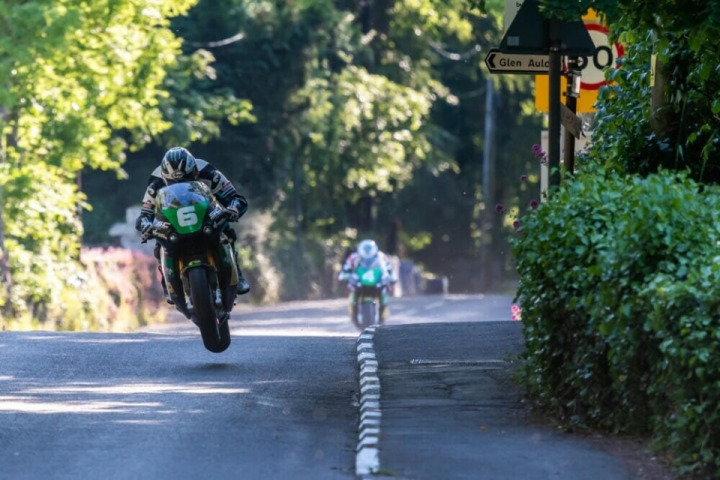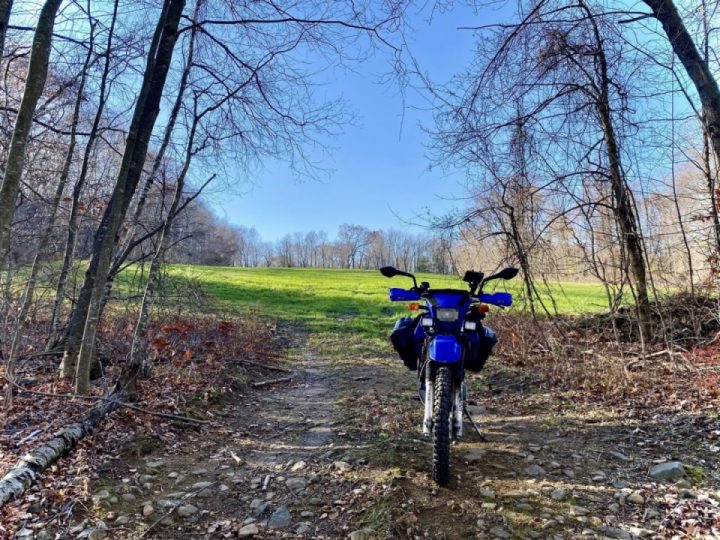Some fascinating background to the 1908 Isle of Man TT race
I already wrote about the 1908 race, but I found some interesting info, these were adventurous times.
“THE MOTOR CYCLE TT RACE, 1908.
To private owners: Now that you are considering the question of your new machine, why not select one suitable for the classic event of the season, and make a bid for the Tourist Trophy? Last year, in spite of a combination of adverse circumstances, the first Motor Cycle TT Race proved a great success, and was voted a most interesting experience by everyone who assisted, whether as competitor, official, or spectator. This year’s event promises to be contested under vastly more favourable conditions and should, if adequately supported, afford a sporting experience at once unique, instructive and amusing. Whether you incline to a twin or prefer a single-cylinder, you are welcome. In either class there is ‘plenty to go for’—quite a variety of prizes, mostly of a value in keeping with the importance of the event. The cylinder dimension limits admit standard engines of practically every maker of repute, and the nature of the course renders a specially light machine not only inadvisable but, in my opinion, a needless risk of one’s chances of success. ‘Oh, but,’ says the Private Owner, ‘when it comes to long-distance racing I’ve no chance against the professionals; it’s simply risking my neck for nothing. Besides, it’s such a fag to get the machine across the water.’ Your pardon, good sir. The former view is, in my opinion, quite a mistaken one.
“J Lang (6hp NSU) changing a plug during earky morning practice in the Isle of Man. The TT machines in the background are RM Brice’s 3½hp Brown and WH Bashall’s 6hp Bat-JAP.”
With regard to the latter item, permit me to assure you that the trouble is very small indeed. In the case of last year’s race the petrol allowance rule had the intended effect of limiting the speed, the winner’s average being the very reasonable one of 38mph. This I consider a perfectly safe speed, having regard to the nature of the course, and the fact that the roads forming the latter are, during the progress of the event, closed to the public. This year the petrol allowance has been still further reduced, so that it is fairly safe to assume that last year’s speeds will not be substantially exceeded. Consequently there will be neither need nor opportunity for either professional or amateur to take any undue risks It is well known that the men who in the 1907 event cut the corners closely and otherwise took risks did not win. The course is—as it should be—of a nature to require the exercise of a fair degree of driving skill and care. I should not, however, class it as extraordinarily difficult, nor as at all beyond the capabilities of any motor cyclist with fair experience of touring at good average speed, and possessed of the mem sana in corpore sano [a healthy mind in a healthy body] essential to success in all forms of athletic competitions. The knowledge that the course is as scrupulously reserved for his use as would be the case at, say, Brooklands or Canning Town, has naturally a ‘grateful and comforting’ effect on the inexperienced competitor, giving him encouragement to extract the best pace from his mount, and confidence in approaching corners at speeds that would be quite unjustifiable under normal conditions. So far, therefore, as the course is concerned, the professional cannot be said to have any undue advantage. When we come to the question of the machines to be used, we find that the regulations are clearly in favour of the private owner. No machine will be allowed to start which is not obviously and incontestably a genuine touring motor bicycle, lacking only pedal gear to bring it up to the most complete standard specification. Inaccessible valves, cylinder ports, inefficient silencers, gingerbread fittings of any kind—all are strictly barred. Since undue lightness in frame, engine or tyres implies almost certain failure, it is obvious that the mechanical advantages attainable by the trade rider, as against a well-tested and efficient privately-owned machine, are practically nil. The fuel for use in the race is, as is well-known, supplied by the ACU. None other may be used, nor is any addition thereto possible.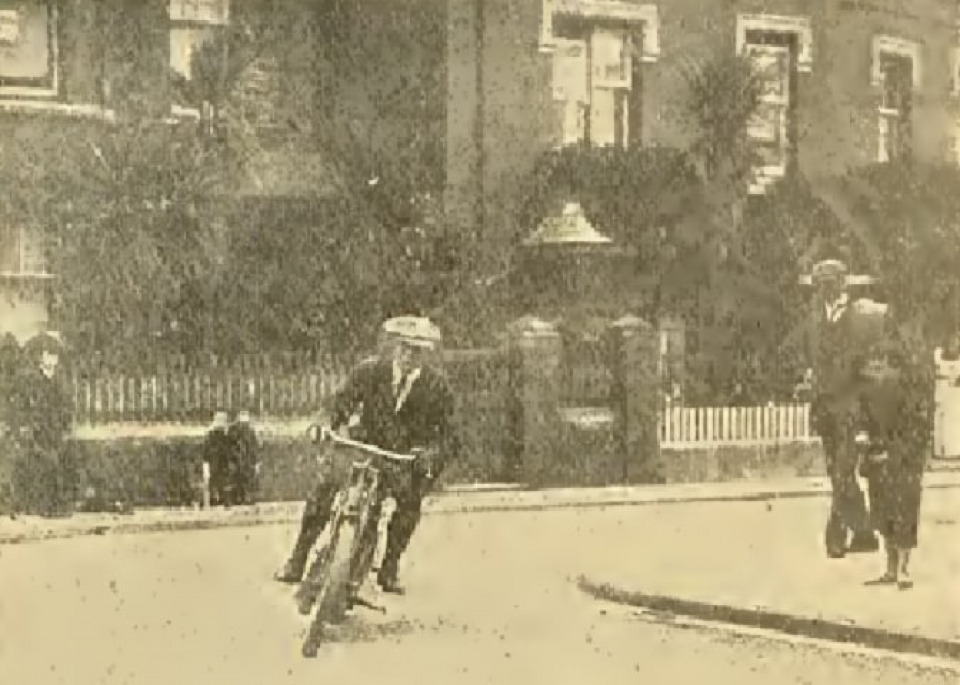
During Robert Ellis takes a corner in Peel aboard his 3½hp Rex. Note the well planted flat cap and collar and tie.
Entrants can obtain from certain local dealers supplies of this special Club fuel for practising purposes, so that ‘tuning up’ may be carried out by all competitors under conditions identical with those obtaining in the race. So much for the imaginary advantages of the trade rider. Now as to other matters, beginning with the journey thither. The preliminary stage (to Liverpool or Fleetwood) is, of course, covered either by rail or by road at the convenience of the competitor. Once arrived upon the landing stage, the motor cyclist discovers two agreeable facts: first, that the carriage of his machine is to cost him considerably less than would be charged for a similar distance over any British line of railway, and (2) that he has a great ‘pull’ over the car owners, inasmuch as he is permitted to take his motor cycle with him on the passenger boats. There is plenty of assistance forthcoming to get the machine on board, where, lashed to the rail which runs round the engine, room, it securely performs the journey under cover and can, if the owner is unnecesarily nervous on its account, be kept under observation during the whole journey. After a sea passage offering an enjoyable change, and terminated before monotony sets in, one is set ashore in a new land—a country where the motorist of any degree is welcomed without being fleeced, where ‘rules and regulations’ other than the requirements of common courtesy and consideration are practically non-existent; where red tape is at a discount, and police traps as scarce as dentition in fowls. The motor cyclist visits a quiet little office, where courteous officials promptly present him with the untrammelled freedom of the Manx highways—and decline to accept any payment therfore! Comfortable accommodation at really reasonable rates will be as plentiful this year as last, the race being fixed to take place towards the end of September, when the great rush of visitors will be over. Last year most of the competitors stayed in Douglas, where facilities for evening recreation are abundant. A few quieter tastes ‘pitched their moving tents’ at Peel or Kirk Michael, which have the advantage of being on the course. The nearest point of the latter to Douglas is at Ballacraine, where the course leaves the Peel-Douglas Road and turns northwards towards Kirk Michael. Directly the competitor has secured quarters to his liking his thoughts will naturally turn to the question of practice. In this respect, again, competitors in the 1907 motor cycle event had enviable advantages over the car drivers. The latter were only allowed to practise between daybreak and 7am, and were required to be ‘off the map’ for the day and cars safely garaged by 8am. On the stroke of the latter hour the single-track speed merchants were free to commence their trial spins. No ‘closing time’ was imposed, the only requirements being that discretion should be exercised, so as to avoid any risk of offence or damage to the property or persons of the islanders or visitors. The results of this experiment were, I believe, perfectly satisfactory on both sides, and it is to be hoped that a similar arrangement will be again adopted this year. To say that the Manx entered into the spirit of the thing is to fail to do them justice. Children and poultry were kept off the road, horses promptly drawn aside, corners indicated by volunteer signallers—everything done that could be reasonably expected, in order that the entrants might be able to achieve good average circuit times. As a matter of fact, some of the competitors never equalled in the race itself their best lap times made in practice, owing to their retaining gears too high for use against the strong, cold wind that sprang up early on the morning of the race. To the lover of speed those practice spins are, in the words of a well-known advertisement, ‘a luxury unknown in England’. There are stretches of road where the pace attainable is only limited by the maximum engine speed.
“Filling up the tanks with the precious spirit.”
Such sections of highway would certainly be police trapped in many English counties, and yet in the Island, secure from persecution beneath the aegis of a more enlightened administration, the motor cyclist daily performed at over 50mph, and nothing happened. Why should it? Confident in the knowledge of competent efficiency on his own part, and rapidly operating control as regards the machine, the rider keeps a keen look-out and, driving always with due discretion, amply justifies the official confidence, which willingly accepts his parole in preference to encouraging falsehood amongst public servants. To those not greatly interested in racing ‘The Island’ offers a touring ground second to none as regards beauty and variety of scenery, always within easy reach of first-class accommodation. I trust, therefore, that I may succeed in inducing a good number of motor cyclists to visit ‘little Man’ this year and so, by no further effort than that involved in the enjoyment of a comparatively cheap holiday, assist in the support of two good causes—the encouragement of the Manx authorities in an enlightened policy, and the promotion of the success of the Motor Cycle Tourist Trophy Race, 1908. “RW Ayton”
“Fixing the numbers on the competitors’ backs.”
“The preliminary regulations or the International Auto Cycle Tourist Trophy Race are before us, and it is interesting to note that Rule 6 says that the machines entered must be touring machines without pedalling gear. Readers will remember that there was a good deal of correspondence last year with respect to the pedalling indulged in by some of the riders in this competition, and the Auto Cycle Union is to be commended for its decision this year, viz, that no pedalling is to be allowed. Such a decision clears the air and leaves no doubt in the minds of competitors.”
“It is interesting to note that all engines will be tested for silence by the judges prior to the race, and any engines which are not efficient in this respect will be disqualified if the fault is not rectified.”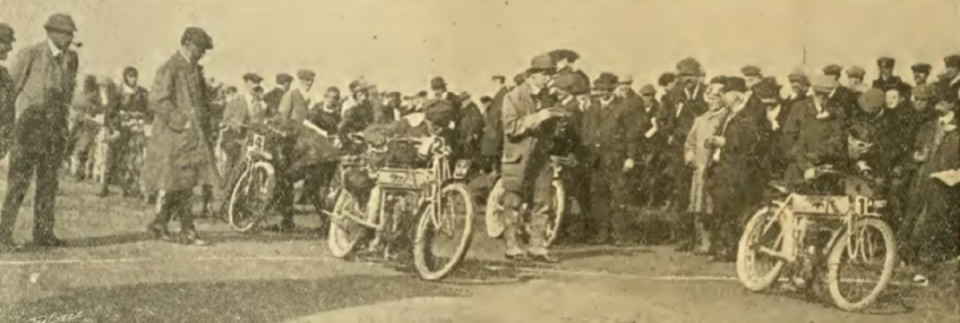
The 1907 winners, Charlie Collier (3½hp Matchless) and Rem Fowler (5hp Norton twin), were first away at the 1908 TT.
“The appeal for donations for the prize fund in connection with the above competition has, we regret to say, met with little response. As we pointed out a fortnight ago, the expenses in connection with the race are very great, and with the object of somewhat lightening the burden on the ACU and offering some substantial reward to the entrants it is necessary to raise a certain sum of money. Several members of the Competitions Committee think that a Shilling Fund will assist the ACU in providing some cash prizes. Every motor cyclist can afford a shilling, and it is not unreasonable to expect that a large number will respond to this appeal. It is such a rare occurrence for motor cycles to be allowed legally to be driven all out over a hilly and arduous course on a certain allowance of petrol, and the benefits which are certain to accrue therefrom both to the industry and the pastime are so great, that a hearty response to this moderate appeal should be made…To swell the Fund, we have sent one hundred shillings to the ACU in addition to the small donation we have already given to the General Prize Fund.”
“WH Bashall and the 6hp Bat-JAP on which he gained second place in the Turist Trophy Race (Twin-Cylinder Class). Mr Bashall is an amateur rider and has entered his 3½hp Triumph for the Brooklands Handicap on Saturday. (Right) M Geiger, who rode one of the two NSU nachines in the TT Race fitted with a two-speed gear.”
“Lord Raglan, Lieutenant-Governor of the Isle of Man, has consented to present the ACU trophies to their respective winners at the Palace Theatre, Douglas.”
“Some experienced riders consider that an average speed of over forty miles an hour will be maintained by the winner of the twin class this year, notwithstanding the reduced allowance of petrol.”
“We arrived in the island on Monday afternoon last in company with a number of other motor cyclists, the majority of whom had brought their machines with them. On approaching land Snaefell was seen to be shrouded in mist, and a damp pall hung about, showing that heavy rain had recently fallen. Once ashore, the number of motor bicycles struck us as being quite remarkable…After the heavy rain the roads were in an appalling condition, being covered with greasy slime…The officials examined the competing machines to see if they conformed to the conditions, and allowed each man his supply of petrol. For each rider of a single-cylinder machine two cans of different colours have been supplied—one (blue) holds a gallon, and the other (white) the remainder, 4pt 13oz. In the case of a rider of a twin-cylinder machine, one can (green) holds 1¼gal, and the other, which is likewise of a different colour, the remainder, 3pt 16¼oz. Another test carried out this morning consisted of getting the men to drive their machines on full throttle from Ballacraine to St John’s, so that the judges stationed near the latter village could testify that the machines were fitted with efficient silencers…A capital scoring board has been erected at the foot of Tynwald Hill, on which the numbers, names of machines and riders, the number of laps, and the times may be seen at a glance…”
Jack Marshall crosses the line to win the 1908 TT at an average of 40.4mph.
“The competitors and their machines were ranged up in a double line, singles on one side of the road and twins on the other. At 10.17am the two first men, CR Collier and H Rem Fowler, were sent on their journey… The sun was shining brightly, the weather was glorious, and the roads were rapidly drying. All started except E Varney, and almost all without exception got away in excellent style. One of the most thrilling starts was made by Gurr’s four-cylinder FN, which showed itself capable of exceedingly rapid acceleration…The men were started at intervals of two minutes, and in an incredibly short space of time the leaders came tearing by, having completed the first lap of 15 miles 1,430 yards…Smythe at the end of his third lap has stopped at the enclosure to replace a broken exhaust valve spring. Ellis broke a petrol pipe after having lowered the tank to allow the petrol to be properly drained out, thus putting an unfair strain on the pipe. This has compelled him to retire. Bennett’s exhaust pipe came adrift, so he stopped opposite the timekeeper’s tent, asked leave to continue, and, having received this, has restarted…At the end of the fifth round, every competitor was stopped at the enclosure and his own particular steward allotted him the remainder of his petrol. The first man to arrive at half-time was CR Collier…At half distance the enclosure became a scene of great activity— men arrived in quick succession, just had time to snatch a little refreshment, and then filled up and restarted. Captain Arbuthnot arrived in excellent spirits, and said it was the biggest fun he had ever had in his life, and restarted as happy as a king…In the seventh round Marshall had gained on Collier, and was now only 49sec behind him…As the time for the completion of the tenth lap drew near the excitement of the spectators rose to fever heat. At last Marshall came in sight, this time leading by 200 yards. Collier came next 2min 16.6sec behind in point of time. Marshall’s ride was a splendid performance, especially as on his third round he had to replace an exhaust valve. He completed the distance in 4hr 4min 50.2sec. The amount of petrol left in his tank was 38oz, showing he could have driven faster if he had been able to tell the amount of petrol he had left whilst running. His average speed throughout the race was 38.7mph. Collier covered the course in 4hr 7min 6.8sec ; he had 22 ozs. of petrol left. Captain Arbuthnot came in third, having completed the course in 4hr 17min 57sec. Thus a3½hp Triumph won, a 3½hp Matchless was second, and a 3½hp Triumph third…In the twin-cylinder class H Reed (5hp Dot-Peugeot) came in first in 4hr 15min 58.6sec, average speed 37mph, residue of petrol 23½oz; 2, WH Bashall (6hp Bat-JAP), 4hr 18min 15sec; 3, RO Clark (5hp four-cylinder FN), 4hr 21min 2sec. Bashall had 21oz of petrol left at the end of the race, and Clark 58oz. H Collier, HV Colver and Wells ran out of petrol—Wells was just short of finishing his last round or he would have held fourth place…AJ Moorhouse (5hp Rex) ran out of petrol and had to push six miles…The event wads even more successful than last year, and considering that the machines were driven to their utmost limits, they proved themselves most reliable. It is a matter for congratulation that not a single untoward incident of any kind marred the success of the race.
☞ Ten singles and 10 twins completed the TT; 13 bikes retired.
☞ Within a couple of weeks WH Bashall had to spend a fiver of his £15 TT winnings on a speeding fine—his brother was trying out a new bike; they were caught doing 45mph.
☞ A TT sweepstake organiser donated 10% of the takings to the Wigan Colliery Disaster Fund—75 miners had been killed in an underground explosion.
“Sir,—I think that in connection with the TT Race there might be a competition arranged for accessibility, such as taking the valves out and replacing, removing cylinder, piston, rings, and also engine complete. It would be found by this that there are many machines made that will cause a great deal of work, and many nuts, bolts, and silencer pipes, tanks and carburetters, etc, that have to be moved to get an exhaust valve out and replaced. This is a thing that should be corrected on touring machines. Of course, this is not the case with all machines, but the thing that wants to be done is to show up the poor ones so that the makers will change them, and one will learn a little from the other, and there will be improvements all round. Other things that are needed are: few parts to collect dirt and dust, no outside ribs on crank cases, magneto gear cases, and the magneto should be enclosed so that the machine presents a smooth appearance. The magneto, I think, is best placed to the rear of the engine, as on the Phanomen or NSU twin-cylinder machine.”
Frank C Saward, New York.
“H Reed, Manchester, the winner of the multi-cylinder class; average speed 37.11 miles per hour. His mount was a 5hp Dot-Peugeot, with Bosch magneto, Amac carburetter, and Dunlop tyres.”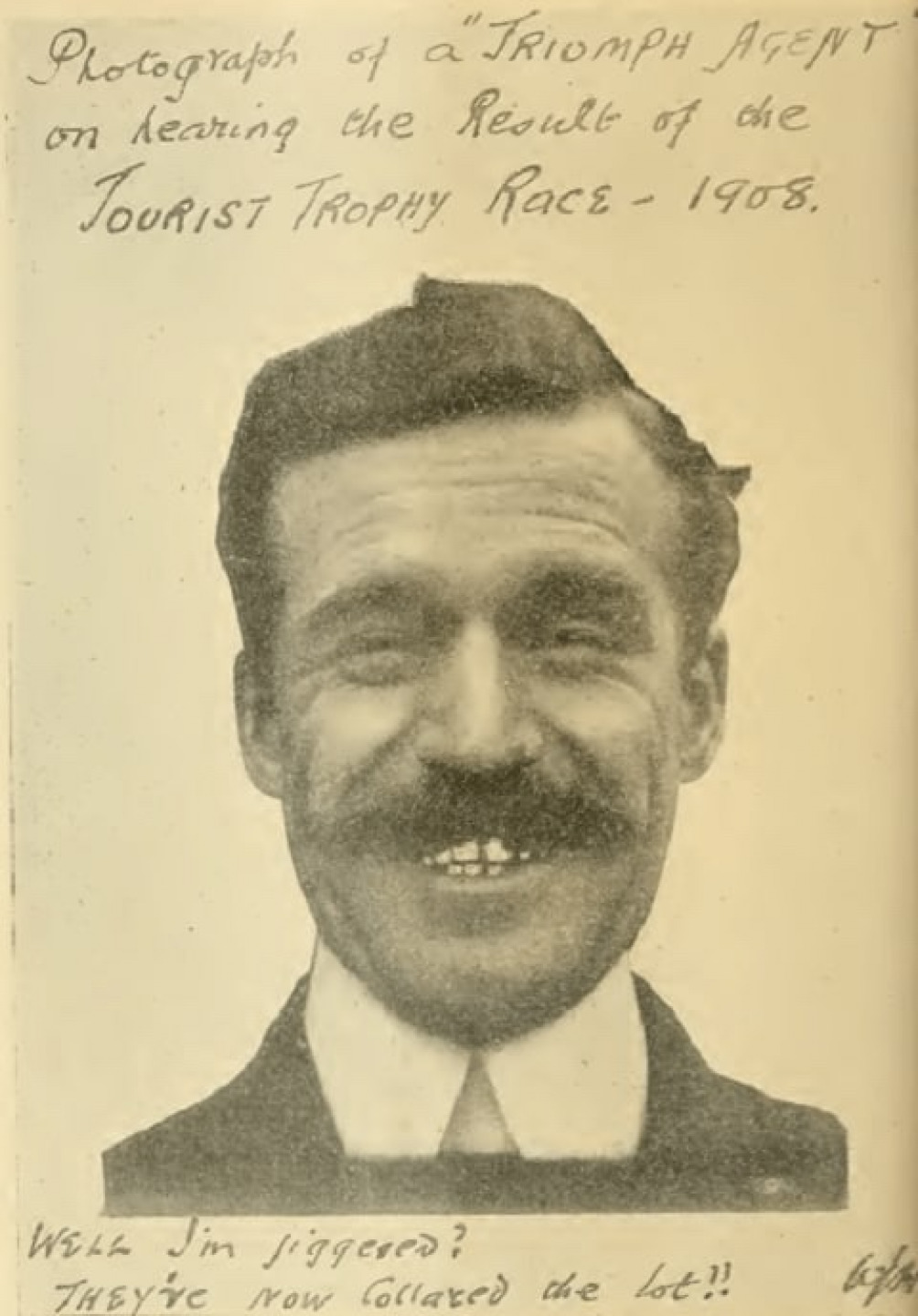
Photo credit and text: motorcycletimeline
#race #tt #tt1908 #history #dunlop #matchless #norton #isleofman
 Follow
4.6K
Follow
4.6K


